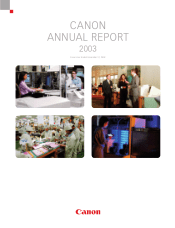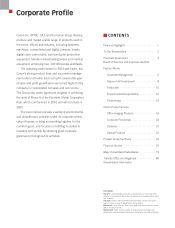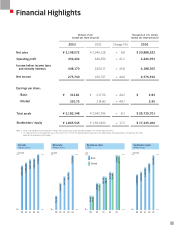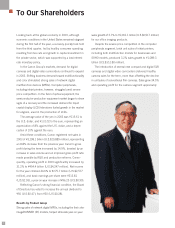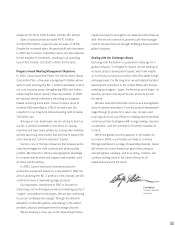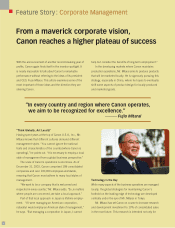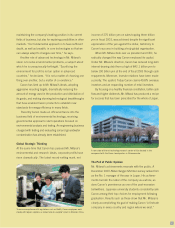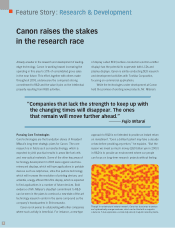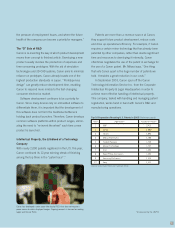Canon 2003 Annual Report Download - page 10
Download and view the complete annual report
Please find page 10 of the 2003 Canon annual report below. You can navigate through the pages in the report by either clicking on the pages listed below, or by using the keyword search tool below to find specific information within the annual report.
Feature Story : Research & Development
Canon raises the stakes
in the research race
Already a leader in the research and development of leading-
edge technology, Canon is working toward increasing the
spending in this area to 10% of consolidated gross sales
in the near future. This effort, together with others made
throughout 2003, underscores the company’s strong
commitment to R&D and the value it pins on the intellectual
property resulting from R&D activities.
Pursuing Core Technologies
Core technologies are the foundation stones of President
Mitarai’s long-term strategic plans for Canon. The core
research is in fields such as nanotechnology, which is
expected to yield practical results in areas like fuel cells
and new optical materials. Some of the other key areas of
technology development in 2003 were organic electrolu-
minescent displays, which will have applications in portable
devices such as cellphones; ultra-fine particle technology,
which will increase the resolution of printing devices; and
a flexible, energy efficient thin-film display, which is expected
to find applications in a number of future devices. Bold
evidence of Mr. Mitarai’s steadfast commitment to R&D
can be seen in the plans to construct a new state-of-the-art
technology research center in the same compound as the
company’s headquarters in Shimomaruko.
Canon is not averse to collaborating with other companies
where such activity is beneficial. For instance, a new type
of display called SED (surface-conduction electron-emitter
display) has the potential to supersede both LCDs and
plasma displays. Canon is jointly conducting SED research
and development activities with Toshiba Corporation,
focusing on commercial applications.
While the technologies under development at Canon
hold the promise of exciting new products, Mr. Mitarai’s
approach to R&D is not intended to provide an instant return
on investment. “Even a brilliant patent may take a decade
or two before providing any return,” he explains. “But the
reason we invest so much money [260 billion yen in 2003]
in R&D is to provide an environment where our people
can focus on long-term research projects without feeling
“Companies that lack the strength to keep up with
the changing times will disappear. The ones
that remain will move further ahead.”
———
Fujio Mitarai
Through its nanostructural material research, Canon has found ways to produce
and systematically arrange nanoholes, which can be filled with a magnetic
substance. Future applications include high-density magnetic recording media.
8

